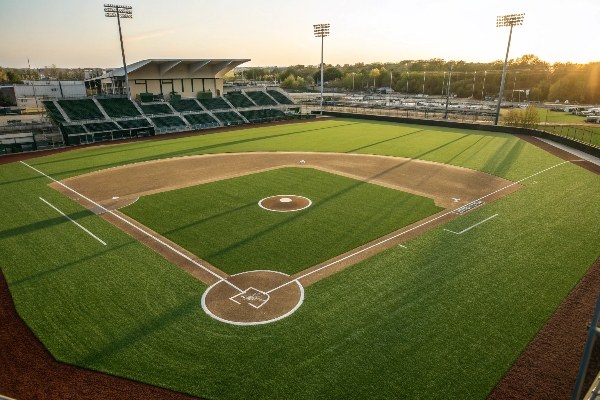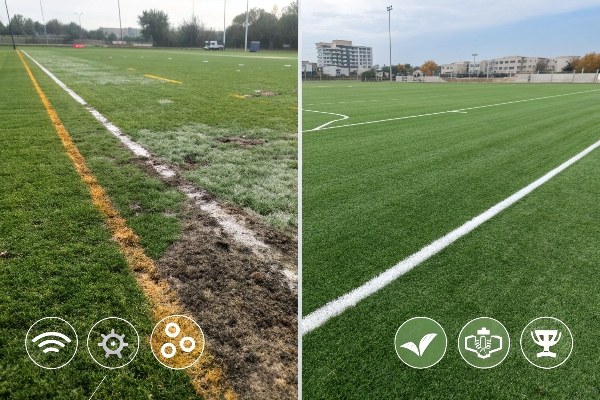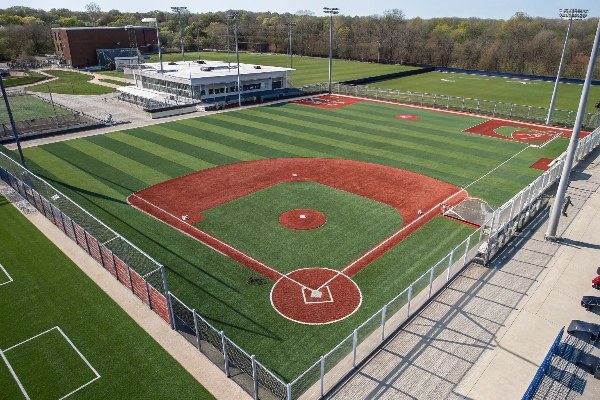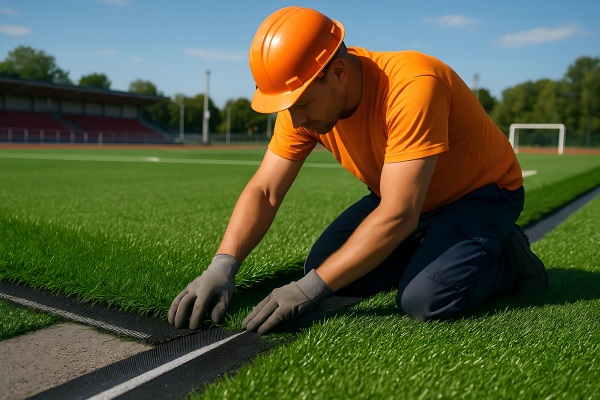Planning a new field but worried about the budget? The total cost can feel like a mystery, with hidden expenses potentially derailing your project. Let’s break down the real numbers.
The total cost to install an artificial turf baseball or softball field typically ranges from $450,000 to over $1,000,000. This price includes the turf material, base preparation, infill, and professional installation. The final figure depends heavily on field size, material quality, and site conditions.

That’s a big price range, I know. You’re probably wondering what makes one project cost twice as much as another. The total cost is more than just the price of the turf roll. It involves many factors that every project manager needs to understand. I’ve seen many clients focus only on the turf price per square meter, but that’s a small part of the whole picture. Let’s dig into the details to see where that money goes and how it all adds up.
Are turf fields cheaper than grass?
Stuck between turf and natural grass for your field? The high upfront cost of turf can be daunting, but it doesn’t tell the whole story. Let’s compare the real long-term costs.
Initially, no. Natural grass is cheaper to install. However, artificial turf becomes more cost-effective over its 8-10 year lifespan. This is due to massive savings on water, mowing, fertilizers, and reseeding. Over a decade, turf is often the cheaper option for high-use fields.

When you look at the numbers, the story becomes very clear. The initial investment for artificial turf is high because it’s a complex construction project. But the real discussion should be about the total cost of ownership1 over the field’s life.
Upfront vs. Long-Term Costs
A natural grass field seems cheap to start. You just need soil, seed, and water. But the maintenance is a constant, expensive cycle. You have to mow it, water it, fertilize it, and paint lines on it, week after week. I remember a client in a dry, hot region who was spending a fortune just on water for his natural grass fields. He told me his water bill alone was a major annual expense.
The Maintenance Cost Breakdown
Artificial turf, on the other hand, has very low maintenance needs. Once it’s installed, you just need to groom it occasionally and keep it clean. The savings on water, chemicals, and labor are huge. Over the 8 to 10-year life of a turf field, these savings almost always outweigh the higher initial investment. Let’s look at a simple yearly comparison for a standard field.
| Maintenance Task | Natural Grass (Annual Est.) | Artificial Turf (Annual Est.) |
|---|---|---|
| Mowing & Labor | $15,000 – $30,000 | $0 |
| Watering | $5,000 – $20,000+ | $0 – $500 (for cleaning) |
| Fertilizers | $3,000 – $8,000 | $0 |
| Pesticides | $2,000 – $5,000 | $0 |
| Line Painting | $2,000 – $4,000 | $0 (permanent lines) |
| Total | $27,000 – $67,000+ | $2,000 – $5,000 |
This table shows why more and more facility managers are choosing turf. The financial decision becomes easy when you look at the decade-long projection.
Can softball fields2 be turf?
Considering turf for your softball field but unsure if it’s the right fit? Traditional clay and grass have their charm, but rainouts and constant maintenance can be a real headache.
Yes, absolutely. Artificial turf is an excellent choice for softball fields. It offers superior durability for heavy use, excellent drainage to reduce rainouts, and a consistent playing surface for reliable ball bounces and player footing. Many modern softball complexes now prefer turf.

From my experience as an engineer, turf is a game-changer for softball programs. The benefits go far beyond just saving money on maintenance. It fundamentally changes how a field can be used.
Unmatched Durability and Playability
Natural grass infields get torn up very quickly, especially around the bases and the pitcher’s circle. A turf field can handle back-to-back games, training camps, and tournaments without showing wear. The surface remains consistent from the first game of the day to the last. This means more available field time, which a community or school can use for more events or team practices. This durability is why I’ve seen so many tournament facilities make the switch.
Consistent Performance, Rain or Shine
One of the biggest advantages is weather resistance. A properly installed turf field has a sophisticated drainage system3 underneath it. After a heavy rain, the field is often ready for play in under an hour. This drastically reduces the number of canceled games. For players, the surface provides a "true ball roll." This removes the bad hops you often get from worn-out spots on a natural grass and dirt infield. I worked on a softball complex conversion a few years back. The head coach told me that in their first season with the new turf, they didn’t have a single rainout, which was unheard of for them. The players loved the predictable surface, and the league loved the reliable schedule.
What factors influence the final cost of a turf field?
Received a quote for a turf field that seems too high, or maybe too low? The final price tag has many moving parts that can be confusing. Let’s clarify what you’re paying for.
The final cost is driven by four main things: the quality of the turf product itself, the amount of site work needed for the base, the type of infill material you choose, and regional labor rates for installation. Higher-grade materials and complex site work will raise the project’s cost.

I always tell my customers that a turf field is a complete system, not just a green carpet. Every component of that system has a cost and an impact on performance and longevity. Ignoring one part to save money on another can lead to problems down the road.
The Turf Product
The turf itself has a big price range. Key factors include:
- Yarn Type: Monofilament yarns look more like natural grass, while slit-film yarns are known for extreme durability. Many fields use a hybrid of both.
- Face Weight: This is the amount of yarn per square meter. A higher face weight means a denser, more durable, and more expensive product.
- Backing: The back of the turf holds the fibers in place. A polyurethane backing is superior to latex because it doesn’t absorb moisture and holds up better over time, but it costs more.
The Foundation Below
This is a hidden but critical cost. A strong, level, and well-draining base is essential for a good field. If the existing site has poor soil or is uneven, it will require extensive excavation, grading, and importing of crushed stone. This "earthwork" can be a very large part of the total project budget. Cutting corners here will lead to a failed field.
The Infill System
Infill is the granular material spread between the turf fibers. It provides ballast, cushioning, and performance characteristics.
- SBR Crumb Rubber: This is the most common and lowest-cost option. It’s made from recycled tires.
- TPE or EPDM: These are virgin or coated rubber pellets. They cost more but do not have the ‘tire smell’ and come in different colors.
- Organic Infill (Cork/Coconut): This is a premium, natural alternative that can help keep the field surface cooler. It is the most expensive option.
Your choice here balances budget, performance, and player perception.
Conclusion
Choosing the right turf for your baseball or softball field is a major investment. By understanding the costs, components, and long-term benefits, you can make a smart decision for lasting success.
-
Explore the concept of total cost of ownership to understand long-term expenses associated with turf and grass. ↩
-
Explore the benefits of using artificial turf for softball fields and how it enhances playability. ↩
-
Discover how a proper drainage system in turf fields can prevent rainouts and ensure consistent playability. ↩
_画板-1.png)
_画板-1.png)